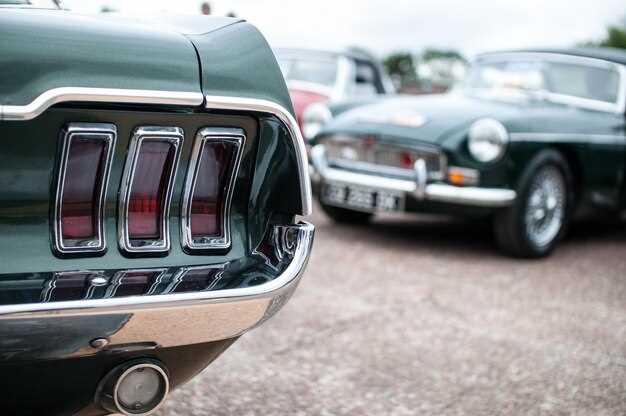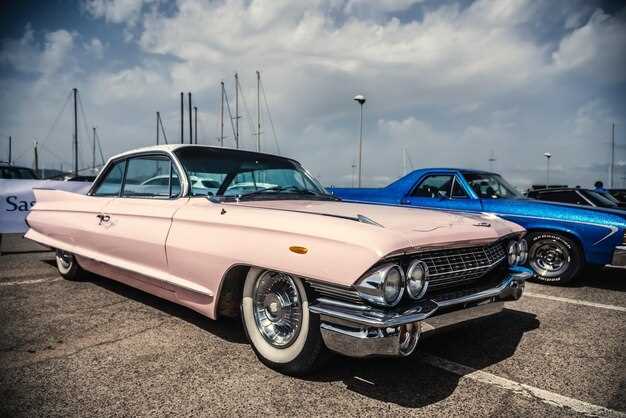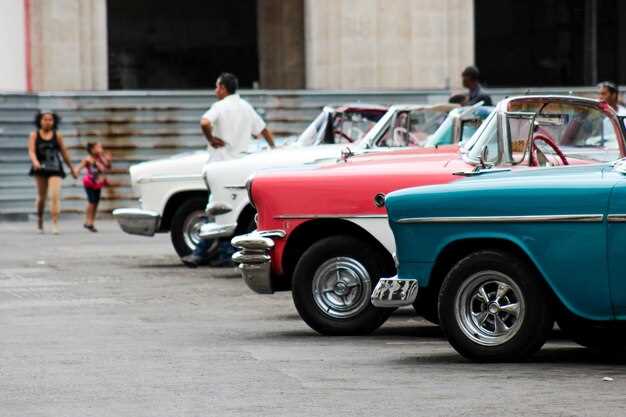
For many aspiring car enthusiasts, embarking on the journey of owning a vintage vehicle can be a thrilling experience. Vintage cars not only embody the nostalgia of past eras but also represent a unique blend of art and engineering. However, finding the right classic car that fits within a reasonable budget can be a challenge for beginners. In this article, we will explore three affordable options that serve as excellent entry points for those looking to dive into the captivating world of classic automobiles.
When considering affordable vintage cars, it is crucial to assess not only the purchase price but also the ongoing maintenance costs, parts availability, and the overall driving experience. These factors play a significant role in ensuring that your first foray into classic car ownership is both enjoyable and manageable. The cars we will highlight are not only budget-friendly but also hold their value well, making them smart choices for any newcomer.
Choosing the right vintage car can ignite a lifelong passion for automobile restoration and collecting, and understanding the options available is vital. Whether you are seeking a unique weekend cruiser or a project car that offers opportunities for restoration and customization, our top three picks will provide a solid foundation for your vintage car journey.
Evaluating the Best Entry-Level Classic Cars on a Budget

When it comes to classic cars, many enthusiasts often find themselves daunted by the price tags attached to these timeless vehicles. However, there are several affordable options that serve as great entry-level classics for beginners looking to make their mark in the vintage car scene without overwhelming their budget.
First, consider the Volkswagen Beetle. This iconic car combines unique styling with reliability. Parts are readily available, making restoration manageable, and its popularity ensures a supportive community for new owners. Prices can often start as low as a few thousand dollars, positioning it as an excellent choice for those just beginning their journey into classic automobiles.
Another remarkable option is the Ford Mustang, particularly models from the late 1960s to early 1970s. Often, you can find them at reasonable prices, especially if you opt for models with smaller engines or less desirable trims. The Mustang’s vast aftermarket availability allows for easy repairs and customization, proving it an ideal platform for newcomers on a budget.
Lastly, the Chevrolet Camaro stands out as a fantastic entry-level classic car. With a robust aftermarket support system and a variety of budget-friendly models available, the Camaro appeals to those who appreciate both style and performance. Many options exist under budget, especially if you are open to earlier generations and models requiring minor work.
In summary, entering the world of classic cars doesn’t have to be financially crippling. By focusing on models like the Volkswagen Beetle, Ford Mustang, and Chevrolet Camaro, beginners can find reliable, stylish vehicles that provide both fun and value. Investing wisely within your budget can lead to rewarding experiences on and off the road.
Key Features to Look for in a Beginner-Friendly Vintage Vehicle
When searching for an affordable vintage car, it’s essential to focus on specific features that ensure the vehicle meets a beginner’s needs. First and foremost, reliability is key. Look for models known for their dependability and ease of maintenance. A vintage car that has a solid reputation for reliability will give you the peace of mind needed as you navigate this new experience.
Another crucial consideration is the availability of parts. Opt for classics with a strong aftermarket support network or those whose components are easily sourced. This will save you money and time on repairs, making it more manageable for beginners on a budget.
Evaluating the overall condition of the vehicle is vital. Beginners should seek cars that are not only visually appealing but also mechanically sound. Avoid vehicles with extensive rust or damage, as these issues can quickly escalate in cost and complexity. It’s beneficial to invest time in inspecting the car thoroughly or having it checked by a professional.
Safety features, even in vintage models, should not be overlooked. While older cars may lack modern safety technologies, look for essential features such as seat belts and reliable braking systems. A vintage vehicle that provides at least basic safety measures will be more suitable for new drivers.
Lastly, consider the driving experience. Cars that are easy to drive and maneuver can enhance the enjoyment for a beginner. Look for vehicles with moderate power and responsive steering, which can make the transition into vintage driving smoother and more enjoyable.
Maintenance Tips for Affordable Classic Cars to Ensure Longevity

Investing in vintage cars can be a rewarding experience, especially when done on a budget. However, maintaining these classics is crucial to ensure they remain roadworthy and retain their value. Regular maintenance is key to longevity.
First and foremost, establish a regular maintenance schedule. This includes oil changes every 3,000 to 5,000 miles, depending on usage. Check all fluids regularly, including coolant, brake fluid, and transmission fluid. Each of these plays a vital role in the performance and lifespan of classic vehicles.
Another important aspect is to inspect the tires frequently. Vintage cars often use specific tire sizes that may be harder to find; thus, keeping them in good condition is essential. Regularly check for proper inflation, tread wear, and signs of damage. Rotate tires every 5,000 to 7,000 miles to ensure even wear.
Keep an eye on the electrical system. Older cars can have outdated wiring that may cause issues over time. Inspect the battery regularly, clean the terminals, and ensure all electrical connections are secure. Consider upgrading to modern components if necessary, while maintaining the classic look.
Rust is a major enemy of classic cars. Regularly wash and wax the exterior to protect the paint and undercarriage. Inspect areas prone to rust for any signs of deterioration. If you spot rust, address it immediately by treating or replacing affected areas.
Lastly, don’t forget about the importance of proper storage. When not in use, store your classic in a climate-controlled garage to protect it from temperature extremes. Use a car cover to prevent dust accumulation and further environmental damage.
By following these maintenance tips, you can keep your affordable classic car in excellent condition, ensuring its longevity in the market while preserving the joy it brings. Remember, a well-maintained classic is not just a vehicle; it’s a piece of history on a budget.
